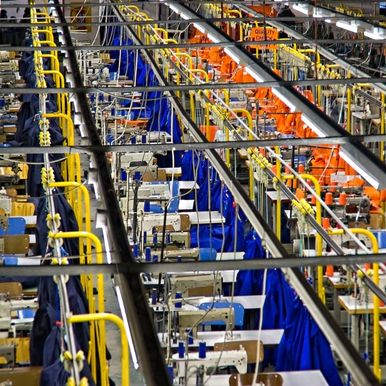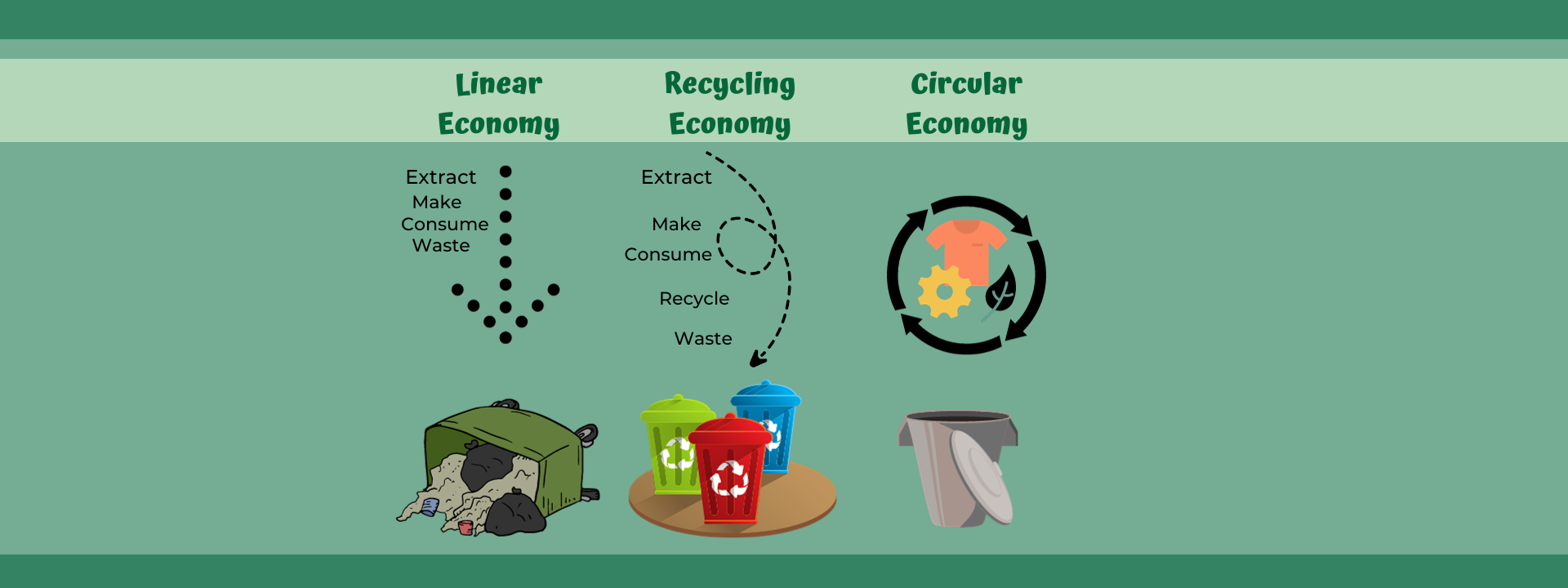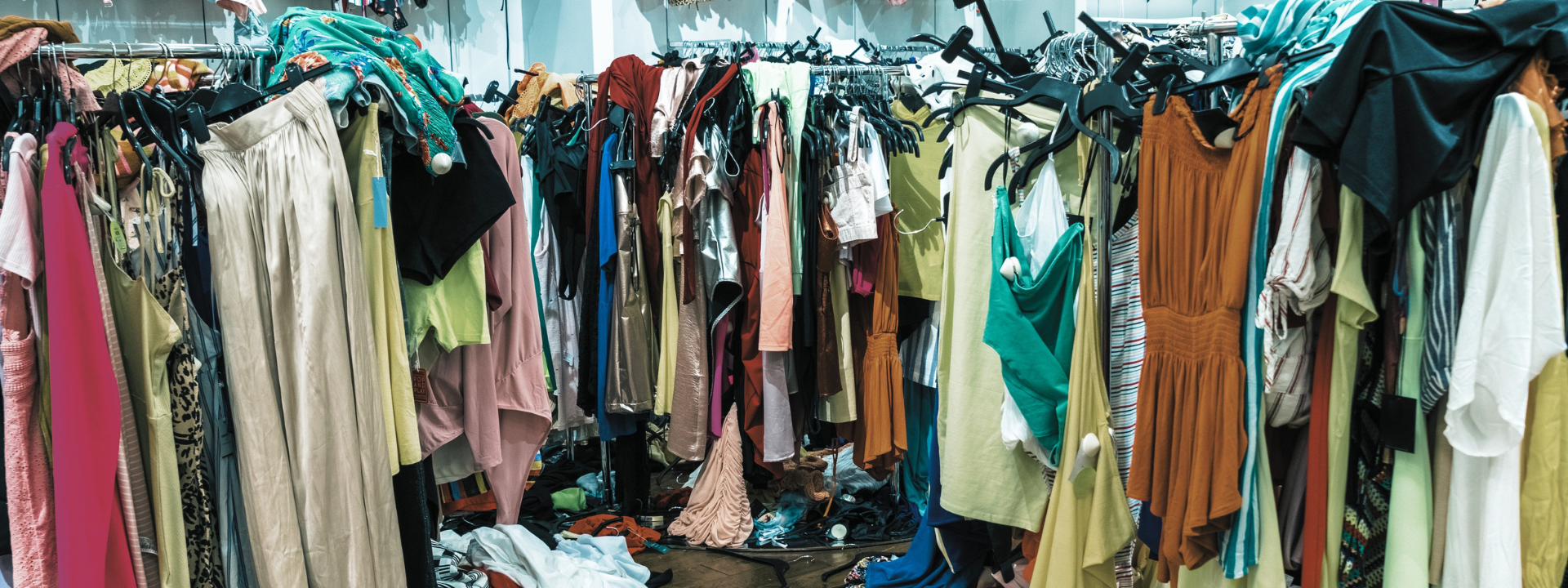The Environmental Impacts of Fast Fashion
What is fast fashion and why does it matter?
Fast fashion is the rapid production, distribution, and marketing of low-quality clothing that fits the current fashion trends. Brands you may not have known that distribute fast fashion clothing include Zara, H&M, GAP, SHEIN, and Amazon. These clothing retailers will create clothing based on what current trends are popular and get the clothing into the stores or online as fast as they can.
Environmental Impacts of Fast Fashion
Why should you care about fast fashion? Because it can have many environmental impacts.
The production of an increased amount of clothing has serious effects on the planet. Many companies are producing clothing at a much faster rate than they can sell.
For example, the fashion industry produces 150 billion garments a year and approximately 87% end up in a landfill or an incinerator.
Textile production, which is the production of fabrics for garments, has serious effects for the environment. Today, clothing is made up of many different textiles. There are natural fibers like cotton, and there are also synthetic fibers like nylon and polyester.

Environmental Impacts of Cotton
The process of growing and producing cotton is not environmentally friendly, for example it takes approximately 20,000 liters of water to produce 1 kilogram of cotton. This is a substantial amount of water consumption as the human body only need approximately 700 liters of water per year to survive.
Cotton is also a very sensitive crop to insects and other plants and therefore uses 16% of all insecticides and 6.8% of herbicides world-wide. This affects the environment through runoff.

When it rains and the pesticides and herbicides in the soil can contaminate water sources nearby and severely affect the biodiversity and wildlife. Pesticides and herbicides can also pose threat to human health without proper safety equipment, even then it is still extremely toxic to people.

Author
Michaela
Nahmabin-Hiltz
Loves all things furry, and a kind and friendly person. A nature walk is my best friend in the
Summer, Spring and Fall. I’m a Western University student who is passionate about health
promotion and making our space a healthy place!
Environmental Impacts of Synthetic Materials
Synthetic fibers also have an environmental impact. Over 60% of all fibers that were produced in 2020 are synthetic. Many of these fabrics are produced from petroleum, which is a non- renewable resource. For example, polyester is a major polluter in fashion.
Polyester is made from petroleum which requires high energy use and produces enormous amounts of carbon dioxide into the atmosphere. It is estimated that nearly 282 billion kilograms of carbon dioxide is emitted in the production of polyester in 2015.

Fast Fashion & Plastic Pollution
Polyester is also a plastic. Polyethylene terephthalate (PET) pellets, a type of plastic used to make soda bottles, is heated and cooled spinning fibers to make the fabric. It is estimated that a half a million tons of plastic microfibers are put into the ocean through the washing of fabrics such as polyester, nylon, or acrylic. Microplastics can have serious effects on marine life. Learn more about microplastics here.

Fast Fashion & Social Impacts
The fast fashion industry also has social impacts on society. In this industry there are tight deadlines for production, this can lead to unsafe working conditions. For example, the Global Slavery Index estimated that 45.8 million people are living in forced labor today.
There are also reports that the fast fashion industry also contributes to gender based violence.
According to Global Labour Justice, women from Dhaka, Bangladesh, Indonesia, India, Sri Lanka, and other countries are routinely subjected to a wide range of violence.

Fast Fashion Solutions- Keeping Fashion Sustainable
The easiest way to stop the complications of fast fashion is to wear clothing you already own.
On average an individual will wear a single piece of clothing 7-10 times before throwing it away.
When you buy high-quality clothing it can last for many years, so before you throw away your clothes consider keeping it or donating it instead.
Another solution to fast fashion is thrifting or buying second hand. There are many options to buying second hand, for example there are many places that rely on donated clothing and sell those clothing and use those profits to help those in need. These are places like Goodwill. You can also sell your clothes to online retailers to sell and resell second hand items. Some examples include ThredUp and Poshmark.
Alternatively, you can rent clothing that you are only going to wear for a small period of time. For example, fancy occasions like weddings, proms or galas, you can rent you apparel for the length of time you’ll need it.
Finally, when you need to rely on buying new clothing you should do research on the brands you are buying from to make sure they use fair and ethical practices to manufacturing clothing.
Some brands contribute to gender-based violence and forced labour. Therefore, advocating for fair wage and safe working conditions is also a way you can help keep fashion sustainable.
Fast Fashion Documentary
This is a story about clothing. It’s about the clothes we wear, the people who make them, and the impact the industry is having on our world. The price of clothing has been decreasing for decades, while the human and environmental costs have grown dramatically.
The True Cost is a groundbreaking documentary film that pulls back the curtain on the untold story and asks us to consider, who really pays the price for our clothing?
Filmed in countries all over the world, from the brightest runways to the darkest slums, and featuring interviews with the world’s leading influencers including Stella McCartney, Livia Firth, and Vandana Shiva, The True Cost is an unprecedented project that invites us on an eye-opening journey around the world and into the lives of the many people and places behind our clothes.
We hope you enjoyed reading about the environmental impacts of fast fashion!
Invite others on your green journey by talking about it!
Easily share this blog to your platforms with the buttons below!
fast fashion problems
fast fashion waste
fast fashion pollution
Join Our Email Community
Gain exclusive access to green trends, tips, and tricks when you sign up for our free newsletter. Enter your email to join our community of changemakers!
More Blog Posts:

The Guide to Veganuary!
Whether you are going full vegan or starting to eat less meat, our guide to veganuary will help you go plant-based in 2023.

5 Circular Economy Companies in Canada To Celebrate Waste Reduction Week
Say hello to 6 Circular Economy Companies in Canada this October as we Celebrate innovators during Waste Reduction Week.




